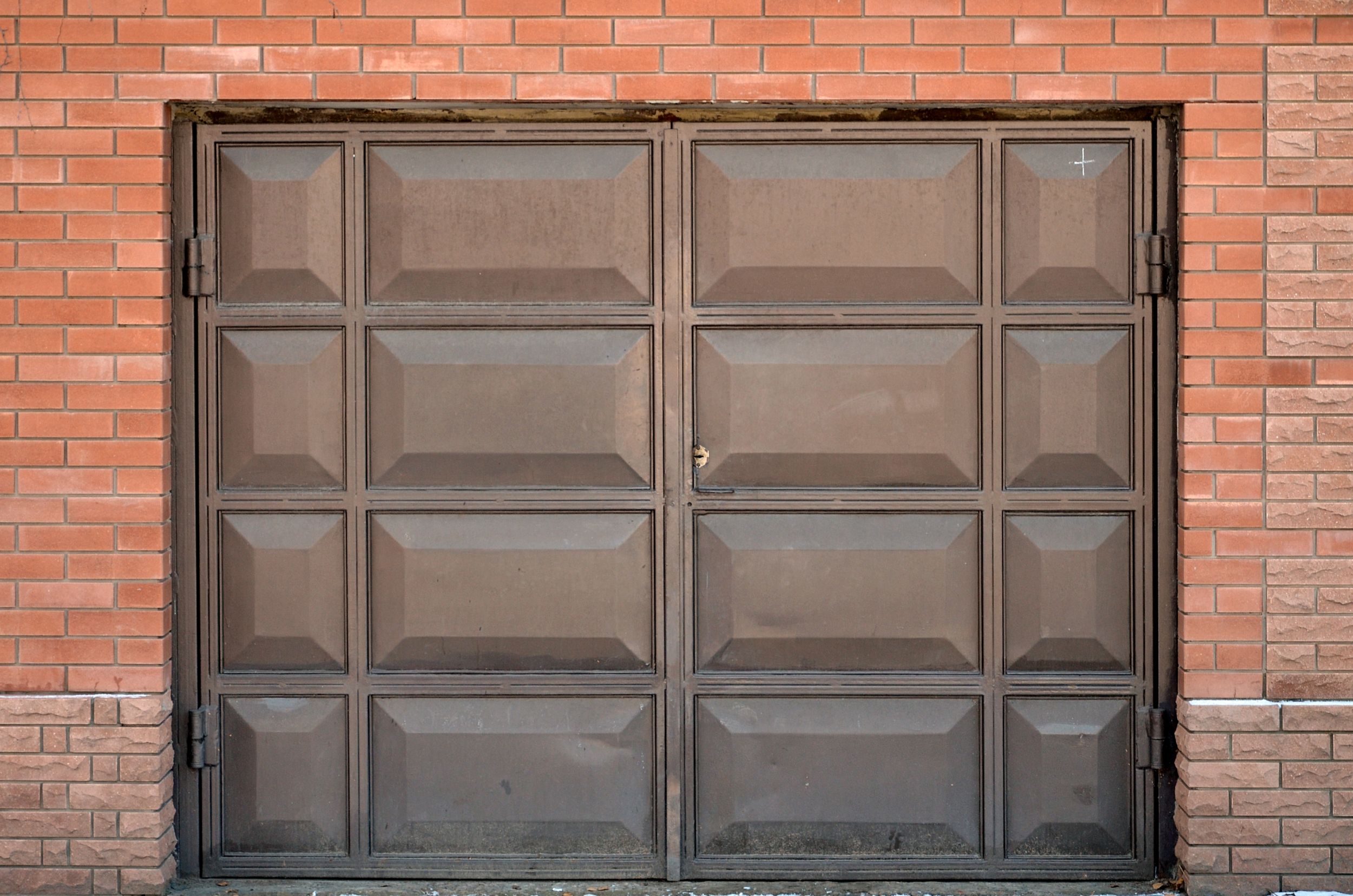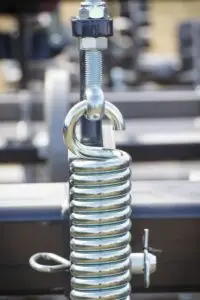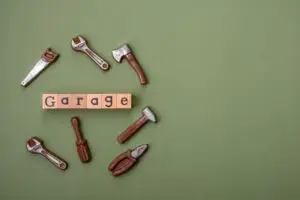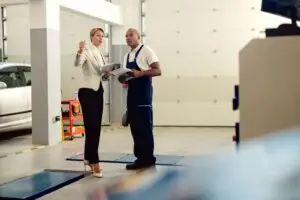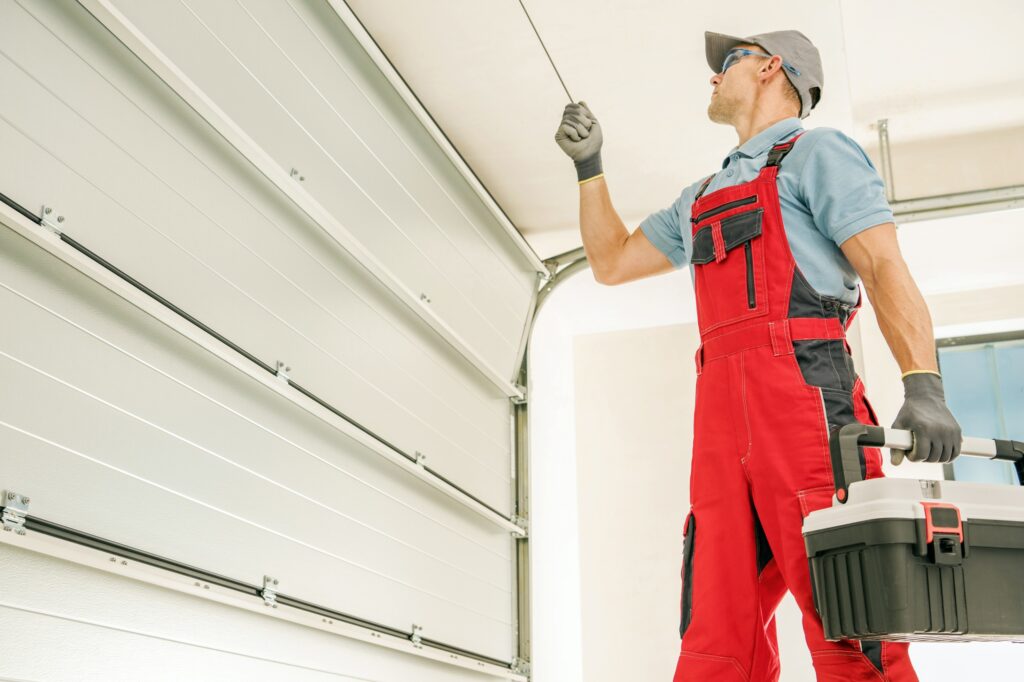We’ve all been there. You press your remote or wall switch, and… nothing. Or maybe your garage door jerks flashes a light, then refuses to move. Cue the frustration. But don’t panic just yet—when your garage door is acting up, the first step is figuring out whether you’re dealing with opener sensor problems or something bigger, like a full-on garage door opener repair situation.
At Houston Garage Door Repair, we’ve seen it all—from crooked sensors to fried motors. So today, we’re diving deep into the classic opener mystery: is it the sensors, or is your opener just plain busted? Let’s unravel the signs, troubleshoot like pros, and help you decide if it’s time to call in backup.
First Things First: Know Your Garage Door Opener System
Before we jump into diagnosis mode, let’s break down the key components of your opener system so you can pinpoint where things might be going wrong:
- Safety Sensors (or Photo Eyes): Mounted near the ground on each side of the garage door. Their job? Keep the door from closing if something’s in the way.
- Motor Unit: Mounted overhead, this is the powerhouse that drives your garage door up and down.
- Wiring and Circuit Board: Think of this as the nerve system that tells your opener what to do.
- Wall Switch and Remote: The communication tools that initiate movement.
- Manual Release Handle: A red cord used to disengage the motor in emergencies.
Understanding these parts will help you figure out whether it’s time to realign your sensors—or repair the garage door motor.
Symptoms That Point to Sensor Trouble
Let’s start with the easier fix: sensors. When these tiny devices get bumped, misaligned, or dusty, they can stop your garage door in its tracks.
1. Door Won’t Close All the Way
If your garage door starts closing and then immediately goes back up, chances are your sensors aren’t seeing eye to eye—literally. This is a classic sign of safety eye misalignment.
2. Blinking Lights on the Opener or Sensor
Many garage door openers use blinking lights to signal that something’s off. If your sensor light is flashing or the motor unit is blinking repeatedly, it’s likely a broken garage door sensor.
3. One Sensor Light Is Off
Sensor lights should be solid. If one side is out (and the other is on), your issue is probably localized. Could be power, wiring, or internal damage.
4. Garage Wall Switch Works, Remote Doesn’t
Sensors can interfere with remote signals, especially if they’re damaged or dirty. Try the wall switch—if that works but the remote doesn’t, you might have a sensor or signal interference issue.
Fixable Sensor Issues You Can Handle
Great news—many opener sensor problems are DIY-friendly if you know what to look for. Here’s your mini garage door repair checklist for sensors:
- Clean the Lenses – Dust, spider webs, or grease can block the infrared beam.
- Align the Sensors – Use a level or string to ensure they’re facing each other perfectly.
- Check the Wiring – Frayed or disconnected wires can break the circuit.
- Secure Loose Mounts – Vibration from door movement can knock sensors out of alignment.
If these quick fixes don’t resolve your issue, you may be looking at a garage opener repair—and that leads us to the next part of our guide.
When It’s NOT the Sensors: Signs of a Busted Opener
Now for the heavy hitters. If your sensors check out and the door still won’t budge, you’re likely facing deeper opener issues. Here’s what that could look like:
1. Motor Not Humming or Engaging
If you hit the switch and hear silence—or worse, a brief sound followed by nothing—it’s time to repair your garage door motor or consider a replacement.
2. Wall Switch and Remote Both Fail
This suggests a circuit board or power issue. If none of your controls are working, it’s likely not a sensor problem at all but rather an issue with the opener’s internal wiring.
3. Door Only Moves a Few Inches
This could be a problem with the motor’s limit switch, worn gears, or opener component breakdown from age or overheating.
4. Manual Release Doesn’t Work
That red rope should disengage the door from the opener. If it doesn’t move manually either, you might be looking at jammed tracks or a full system failure.
Houston’s Climate Can Make It Worse

If you live in Houston, you already know how the heat and humidity can mess with electronics. Add that to an already aging garage door opener, and you’ve got a recipe for a breakdown.
Common climate-related issues:
- Corrosion on Sensor Wiring
- Condensation Inside the Motor Unit
- Heat-Related Circuit Failures
That’s why regular maintenance and early repair calls can save you from total failure down the line.
When to Replace Instead of Repair
So you’ve tried troubleshooting. Maybe you’ve even had a pro replace a few components, but issues keep popping up. That’s when it’s time to start thinking about a new unit.
Here are some signs your opener is beyond saving:
- It’s over 10–12 years old
- You’ve repaired it more than twice in the last 18 months
- You want quieter or smarter tech
- Your motor doesn’t meet modern garage safety features
Quick Troubleshooting Chart
| Symptom | Sensor or Opener? |
|---|---|
| Blinking sensor light | Sensor |
| No lights, no sound | Opener |
| Door reverses mid-close | Sensor |
| Opener hums, door doesn’t move | Opener (motor or gear) |
| Wall switch dead, remote works | Wiring or board (Opener) |
Use this chart to quickly zero in on the problem before calling for help.
Let’s Get That Opener Back on Track
Still not sure if you’ve got busted sensors or a truly busted opener? No worries. That’s exactly what Houston Garage Door Repair is here for. Our licensed techs offer fast diagnostics, upfront pricing, and solutions tailored to your specific setup. Whether it’s a quick sensor tweak or a full motor swap, we’ve got the tools—and the know-how—to get your garage moving again.
FAQ: Your Extra Questions, Answered
Can LED lights in your garage interfere with sensor operation?
Yes, they can! Some LED lightbulbs emit electromagnetic interference that can disrupt the infrared signal between sensors. If your door randomly opens or closes, or the sensors seem unreliable, try swapping out the bulb for a sensor-compatible LED or incandescent option.
How do you test your garage door opener’s force setting?
Most openers have an adjustment screw labeled “up force” or “down force.” To test it, place a block of wood under the door and close it. If it doesn’t reverse when it hits the block, the force setting may be too high—and dangerous. Always refer to your opener’s manual or call a technician for safe adjustments.
Up Next: Quiet Living Starts with Smart Installation
Want an opener that doesn’t grind, rattle, or wake up your neighbors? Don’t miss our next article: “Garage Door Opener Installation for Quiet Living: Best Low-Noise Options.“ Whether you’re upgrading or starting fresh, it’s your roadmap to peace, quiet, and tech-savvy convenience.

